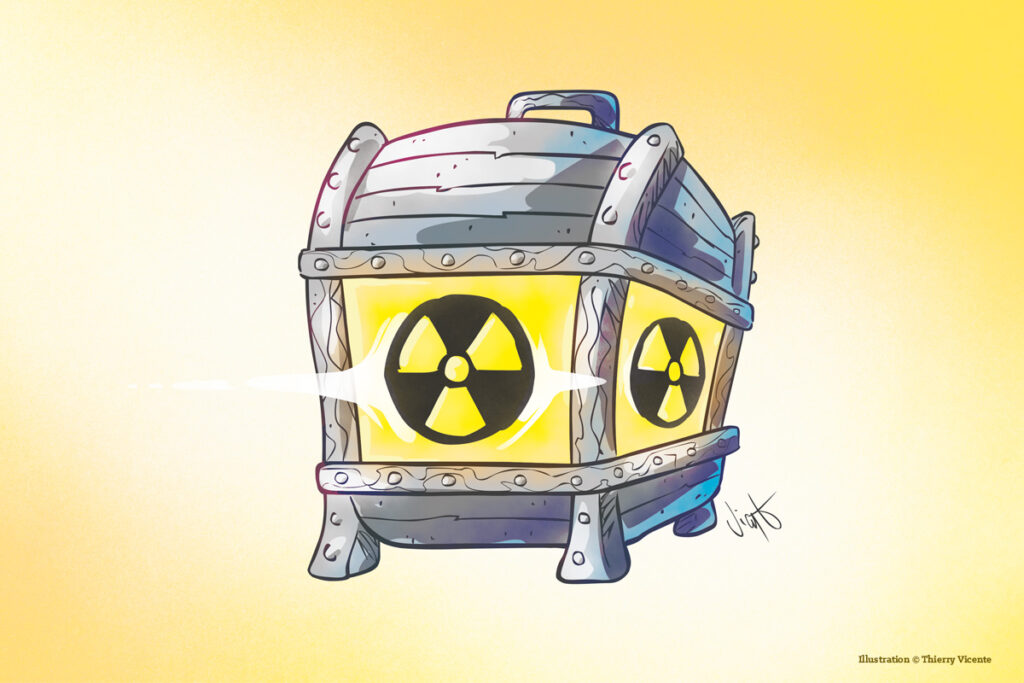[LUM#19] Sustainable waste
What should be done with radioactive waste produced by nuclear power? This is a major challenge, given that some types of waste will continue to emit radiation for hundreds of thousands of years. The solution? Isolate and store it so that people are not exposed to it. Xavier Deschanels, a researcher at the Institute for Separative Chemistry in Marcoule*, explains how these special materials are handled.

Although nuclear power accounts for only 10% of global electricity production, it is by far the leading source of electricity in France, with 70% of the country's electricity coming from 18 nuclear power plants located throughout the country.
A production method that emits little greenhouse gas but leaves behind a cumbersome residue: radioactive waste. How can this special waste be managed safely? "It all depends on the type of waste we're talking about, because in reality there are different categories of radioactive waste," explains Xavier Deschanels, a researcher at the Marcoule Institute of Separative Chemistry (ICSM). It is classified according to two parameters: the intensity of its radioactivity and the half-life of the radionuclides, which determines how long it will remain radioactive. Regardless of the type of waste, the principle is the same: isolate it as much as possible from the environment in order to minimize exposure to radioactivity. But the methods of isolation differ depending on the category of waste.
Confined packages
"The vast majority of nuclear waste is short-lived. It accounts for over 90% of the total volume of radioactive waste in France, but only 0.03% of the total radioactivity," the researcher points out. For this waste, the chosen solution is surface storage. "It's a highly organized process, far removed from simple landfill. The waste is first packaged in containers, i.e., it is enclosed in a steel or concrete container after undergoing various treatments such as incineration and compaction, " explains the researcher.
These unique packages are then confined to the earth's surface in reinforced concrete storage structures. "These structures are then sealed with a permanent cover composed of several layers of natural materials such as clay to protect them from the elements and ensure long-term storage safety, then monitored for 300 years, after which time they will no longer be radioactive, " explains Xavier Deschanels.
Deep burial
300 years is a fraction of a second compared to the thousands of years during which high-level waste will remain radioactive. Although it accounts for more than 95% of the total activity of nuclear waste, its total volume represents only around 0.2% of the total volume of this waste. "That's the equivalent of an Olympic-size swimming pool since the beginning of nuclear power in France, " the researcher explains.
And for this category of waste, considered the most dangerous, surface storage is out of the question. The solution? Deep burial. Waste that is not buried as is, but undergoes complex technological processes. "Initially, it is in the form of a highly radioactive liquid, which is evaporated to obtain what is known as calcine, a highly concentrated form of radioactivity that is then mixed with glass powder to stabilize the inorganic materials."
The end result is glass packages weighing around 400 kilograms each, with such high levels of radioactivity that their temperature is around 350°C, a heat that will take around 60 years to decrease through radioactive decay. "For the time being, they are kept in permanently cooled pools and then stored in concrete wells at the La Hague processing plant, awaiting the upcoming opening of the Cigeo industrial geological storage center in Bure, where they will be buried 500 meters underground at a site chosen for its geological characteristics to ensure that there is no release of radioactivity to the surface," explains Xavier Deschanels.
Transmutation
What other approaches are being considered for nuclear waste management? "At ISCM, we are working to develop solutions such as transmutation, which involves extracting certain radionuclides known as minor actinides and then transforming them, through a series of nuclear reactions, into fission products similar to those produced by uranium fission, which have lower radiotoxicity," adds the researcher. This process would require new nuclear facilities, which themselves produce waste that would also need to be stored deep underground.
Another avenue being explored by researchers is "the use of mesoporous materials, which have the unique ability to encapsulate radioactive elements. In practice, the radioactive liquid passes through a selective membrane that retains the radionuclides, and the radioactivity then collapses the porosity of the material, trapping them." These innovations will not replace the current principle for the time being: "Isolating and storing nuclear waste remains the universal approach," concludes Xavier Deschanels.
*ICSM (CNRS, CEA, UM, ENSCM)
Find UM podcasts now available on your favorite platform (Spotify, Deezer, Apple Podcasts, Amazon Music, etc.).